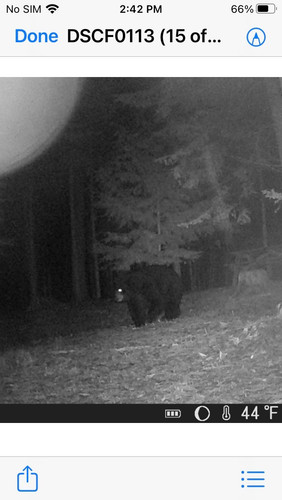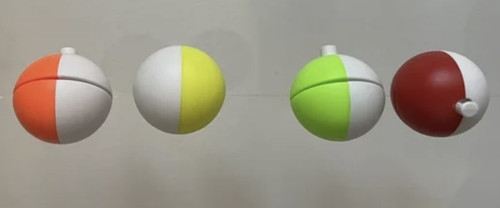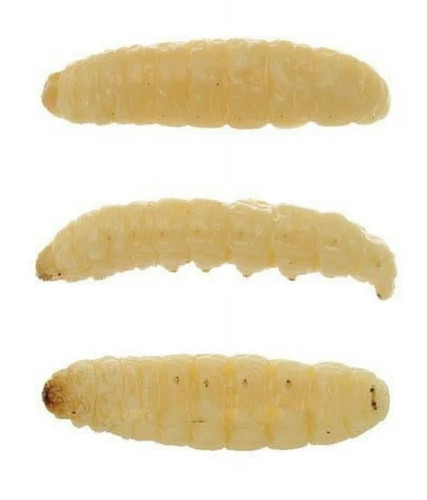- Welcome to FinsandFur.net Forums.
Recent posts
#1
The Tailgate / Today in history 5-6
Last post by remrogers - Today at 10:21:25 AM1937
May 6
The Hindenburg disaster
The airship Hindenburg, the largest dirigible ever built and the pride of Nazi Germany, bursts into flames upon touching its mooring mast in Lakehurst, New Jersey, killing 36 passengers and crew-members, on May 6, 1937.
Frenchman Henri Giffard constructed the first successful airship in 1852. His hydrogen-filled blimp carried a three-horsepower steam engine that turned a large propeller and flew at a speed of six miles per hour. The rigid airship, often known as the "zeppelin" after the last name of its innovator, Count Ferdinand von Zeppelin, was developed by the Germans in the late 19th century. Unlike French airships, the German ships had a light framework of metal girders that protected a gas-filled interior. However, like Giffard's airship, they were lifted by highly flammable hydrogen gas and vulnerable to explosion. Large enough to carry substantial numbers of passengers, one of the most famous rigid airships was the Graf Zeppelin, a dirigible that traveled around the world in 1929. In the 1930s, the Graf Zeppelin pioneered the first transatlantic air service, leading to the construction of the Hindenburg, a larger passenger airship.
On May 3, 1937, the Hindenburg left Frankfurt, Germany, for a journey across the Atlantic to Lakehurst's Navy Air Base. Stretching 804 feet from stern to bow, it carried 36 passengers and crew of 61. While attempting to moor at Lakehurst, the airship suddenly burst into flames, probably after a spark ignited its hydrogen core. Rapidly falling 200 feet to the ground, the hull of the airship incinerated within seconds. Thirteen passengers, 21 crewmen, and 1 civilian member of the ground crew lost their lives, and most of the survivors suffered substantial injuries.
Radio announcer Herb Morrison, who came to Lakehurst to record a routine voice-over for an NBC newsreel, immortalized the Hindenberg disaster in a famous on-the-scene description in which he emotionally declared, "Oh, the humanity!" The recording of Morrison's commentary was immediately flown to New York, where it was aired as part of America's first coast-to-coast radio news broadcast. Lighter-than-air passenger travel rapidly fell out of favor after the Hindenberg disaster, and no rigid airships survived World War II.
May 6
The Hindenburg disaster
The airship Hindenburg, the largest dirigible ever built and the pride of Nazi Germany, bursts into flames upon touching its mooring mast in Lakehurst, New Jersey, killing 36 passengers and crew-members, on May 6, 1937.
Frenchman Henri Giffard constructed the first successful airship in 1852. His hydrogen-filled blimp carried a three-horsepower steam engine that turned a large propeller and flew at a speed of six miles per hour. The rigid airship, often known as the "zeppelin" after the last name of its innovator, Count Ferdinand von Zeppelin, was developed by the Germans in the late 19th century. Unlike French airships, the German ships had a light framework of metal girders that protected a gas-filled interior. However, like Giffard's airship, they were lifted by highly flammable hydrogen gas and vulnerable to explosion. Large enough to carry substantial numbers of passengers, one of the most famous rigid airships was the Graf Zeppelin, a dirigible that traveled around the world in 1929. In the 1930s, the Graf Zeppelin pioneered the first transatlantic air service, leading to the construction of the Hindenburg, a larger passenger airship.
On May 3, 1937, the Hindenburg left Frankfurt, Germany, for a journey across the Atlantic to Lakehurst's Navy Air Base. Stretching 804 feet from stern to bow, it carried 36 passengers and crew of 61. While attempting to moor at Lakehurst, the airship suddenly burst into flames, probably after a spark ignited its hydrogen core. Rapidly falling 200 feet to the ground, the hull of the airship incinerated within seconds. Thirteen passengers, 21 crewmen, and 1 civilian member of the ground crew lost their lives, and most of the survivors suffered substantial injuries.
Radio announcer Herb Morrison, who came to Lakehurst to record a routine voice-over for an NBC newsreel, immortalized the Hindenberg disaster in a famous on-the-scene description in which he emotionally declared, "Oh, the humanity!" The recording of Morrison's commentary was immediately flown to New York, where it was aired as part of America's first coast-to-coast radio news broadcast. Lighter-than-air passenger travel rapidly fell out of favor after the Hindenberg disaster, and no rigid airships survived World War II.
#2
Non Hunting/Fishing Photos / Re: Is it time Jim?
Last post by Todd Rahm - Today at 06:30:26 AMI'll drag mine out this week for some work, and hopefully in the water by next week. The LM Bass should be bedded up by now. 🥰
Ah, walleyes might be a blast in a kayak (I have never fished for or caught one.)
Ah, walleyes might be a blast in a kayak (I have never fished for or caught one.)
#3
Non Hunting/Fishing Photos / Big Bubba
Last post by nastygunz - Yesterday at 05:07:55 PM #4
The Tailgate / Today in history 5-5
Last post by remrogers - Yesterday at 11:41:12 AM1945
May 5
Six killed in Oregon by Japanese bomb
In Gearhart Mountain, Oregon, Mrs. Elsie Mitchell and five neighborhood children are killed while attempting to drag a Japanese balloon out of the woods. Unbeknownst to Mitchell and the children, the balloon was armed, and it exploded soon after they began tampering with it. They were the first and only known American civilians to be killed in the continental United States during World War II. The U.S. government eventually gave $5,000 in compensation to Mitchell's husband, and $3,000 each to the families of Edward Engen, Sherman Shoemaker, Jay Gifford and Richard and Ethel Patzke, the five slain children.
The explosive balloon found at Lakeview was a product of one of only a handful of Japanese attacks against the continental United States, which were conducted early in the war by Japanese submarines and later by high-altitude balloons carrying explosives or incendiaries. In comparison, three years earlier, on April 18, 1942, the first squadron of U.S. bombers dropped bombs on the Japanese cities of Tokyo, Kobe and Nagoya, surprising the Japanese military command, who believed their home islands to be out of reach of Allied air attacks. When the war ended on August 14, 1945, some 160,000 tons of conventional explosives and two atomic bombs had been dropped on Japan by the United States. Approximately 500,000 Japanese civilians were killed as a result of these bombing attacks.
May 5
Six killed in Oregon by Japanese bomb
In Gearhart Mountain, Oregon, Mrs. Elsie Mitchell and five neighborhood children are killed while attempting to drag a Japanese balloon out of the woods. Unbeknownst to Mitchell and the children, the balloon was armed, and it exploded soon after they began tampering with it. They were the first and only known American civilians to be killed in the continental United States during World War II. The U.S. government eventually gave $5,000 in compensation to Mitchell's husband, and $3,000 each to the families of Edward Engen, Sherman Shoemaker, Jay Gifford and Richard and Ethel Patzke, the five slain children.
The explosive balloon found at Lakeview was a product of one of only a handful of Japanese attacks against the continental United States, which were conducted early in the war by Japanese submarines and later by high-altitude balloons carrying explosives or incendiaries. In comparison, three years earlier, on April 18, 1942, the first squadron of U.S. bombers dropped bombs on the Japanese cities of Tokyo, Kobe and Nagoya, surprising the Japanese military command, who believed their home islands to be out of reach of Allied air attacks. When the war ended on August 14, 1945, some 160,000 tons of conventional explosives and two atomic bombs had been dropped on Japan by the United States. Approximately 500,000 Japanese civilians were killed as a result of these bombing attacks.
#5
Fishing Equipment / Fishing stuff.
Last post by nastygunz - May 04, 2024, 12:40:22 PM #6
The Tailgate / Today in history 5-4
Last post by remrogers - May 04, 2024, 09:08:00 AM1970
May 4
National Guard kills four students in Kent State shootings
Photo Credit: CSU Archives/Everett Collection
On May 4, 1970, in Kent, Ohio, 28 National Guardsmen fire their weapons at a group of anti-war demonstrators on the Kent State University campus, killing four students, wounding eight and permanently paralyzing another. The tragedy was a watershed moment for a nation divided by the conflict in Vietnam, and further galvanized the anti-war movement.
Two days earlier, on May 2, National Guard troops were called to Kent to suppress students rioting in protest of the Vietnam War and the U.S. invasion of Cambodia. The next day, scattered protests were dispersed by tear gas, and on May 4 class resumed at Kent State University. By noon that day, despite a ban on rallies, some 2,000 people had assembled on the campus. National Guard troops arrived and ordered the crowd to disperse, fired tear gas, and advanced against the students with bayonets fixed on their rifles. Some of the protesters, refusing to yield, responded by throwing rocks and verbally taunting the troops.
Minutes later, without firing a warning shot, the Guardsmen discharged more than 60 rounds toward a group of demonstrators in a nearby parking lot, killing four and wounding nine. The closest casualty was 20 yards away, and the farthest was almost 250 yards away. After a period of disbelief, shock, and attempts at first aid, angry students gathered on a nearby slope and were again ordered to move by the Guardsmen. Faculty members were able to convince the group to disperse, and further bloodshed was prevented.
The shootings led to protests on college campuses across the country. Photographs of the massacre became enduring images of the anti-war movement. In 1974, at the end of a criminal investigation, a federal court dropped all charges levied against eight Ohio National Guardsmen for their role in the Kent State students' deaths.
May 4
National Guard kills four students in Kent State shootings
Photo Credit: CSU Archives/Everett Collection
On May 4, 1970, in Kent, Ohio, 28 National Guardsmen fire their weapons at a group of anti-war demonstrators on the Kent State University campus, killing four students, wounding eight and permanently paralyzing another. The tragedy was a watershed moment for a nation divided by the conflict in Vietnam, and further galvanized the anti-war movement.
Two days earlier, on May 2, National Guard troops were called to Kent to suppress students rioting in protest of the Vietnam War and the U.S. invasion of Cambodia. The next day, scattered protests were dispersed by tear gas, and on May 4 class resumed at Kent State University. By noon that day, despite a ban on rallies, some 2,000 people had assembled on the campus. National Guard troops arrived and ordered the crowd to disperse, fired tear gas, and advanced against the students with bayonets fixed on their rifles. Some of the protesters, refusing to yield, responded by throwing rocks and verbally taunting the troops.
Minutes later, without firing a warning shot, the Guardsmen discharged more than 60 rounds toward a group of demonstrators in a nearby parking lot, killing four and wounding nine. The closest casualty was 20 yards away, and the farthest was almost 250 yards away. After a period of disbelief, shock, and attempts at first aid, angry students gathered on a nearby slope and were again ordered to move by the Guardsmen. Faculty members were able to convince the group to disperse, and further bloodshed was prevented.
The shootings led to protests on college campuses across the country. Photographs of the massacre became enduring images of the anti-war movement. In 1974, at the end of a criminal investigation, a federal court dropped all charges levied against eight Ohio National Guardsmen for their role in the Kent State students' deaths.
#7
Non Hunting/Fishing Photos / Re: Oh-Oh!
Last post by nastygunz - May 04, 2024, 08:07:57 AMYupp lol.
#8
Non Hunting/Fishing Photos / Re: Oh-Oh!
Last post by msmith - May 04, 2024, 07:03:31 AMKinda like humans
#9
The Tailgate / Re: S'posed to get my biggest ...
Last post by Hawks Feather - May 03, 2024, 12:50:03 PMThanks for the update and I am glad to hear things are still headed in the right direction. It is hard to imagine how many things that you just take for granted that need to be rethought.
I had a friend that had heart surgery (like you) and his biggest complaint was that he was not allowed to fire a rifle or pistol. On the day that he got permission to fire a light recoil rifle we went out to the range and I set up a heavy weight .22LR in a rest with a couple of sand bags so it wouldn't move at all and he shot 'free' recoil and was really happy.
I had a friend that had heart surgery (like you) and his biggest complaint was that he was not allowed to fire a rifle or pistol. On the day that he got permission to fire a light recoil rifle we went out to the range and I set up a heavy weight .22LR in a rest with a couple of sand bags so it wouldn't move at all and he shot 'free' recoil and was really happy.
#10
The Tailgate / Re: S'posed to get my biggest ...
Last post by Okanagan - May 03, 2024, 12:01:24 PMA progress report and cautions, especially for anyone who has to go through this.
Between 35 and 40 days after the aortic valve surgery, I turned a corner on healing, or at least improving. My chest still hurts most of the time (today makes 46 days since the operation), but it is like a big bruise localized on my chest rather than discomfort and misery all over. The awful fatigue and brain fog is lessening, almost gone for a few hours sometimes. I wake up quite a bit at night but for the second time since surgery, I woke up this morning feeling rested. The weird dreams have dropped off quite a bit.
Any movement or position that uses upper body or chest muscles hurts. It is amazing how many normal motions etc. use upper body and/or chest muscles. A good and safe rule is: if it hurts, DON'T DO IT! Don't risk injuring the incision. Legs muscles and leg strength are fine.
FWIW, my mistakes that could have seriously injured my incision. Things in my house that hurt too much to do: flushing the toilet. The little flipper flush lever takes too much force. Pulling on a pull/push faucet in our bathroom takes too much force. Did not use that sink till day 43 after surgery. Lifting a mug of coffee into our overhead mounted micro-wave. Opening the hatch back on our car. Lifting a bowl of anything from fridge. Groceries. Etc. Etc.
Pulling on store doors to open them caused my biggest risk. About day 28 I tried to open the door to a Wendy's hamburger shop. I pulled on the heavy door, which way exceeded my five pounds of force limit. As I pulled harder, I realized it was too much and stopped pulling a split second too late. A lightening pain shot the full length of my sternum incision. I was afraid that I had split the bone apart where it was trying to heal back together. It hurt extra for the next 20 hours. My temperature went up 1 ½ degree for the next 24 hours (which I think indicates some kind of injury and focused healing going on), and I slept all day the following day.
The incision seems to be OK now, but I simply do not try to open most doors. There are a lot of them. A couple of times I have waited outside till someone else came along or someone saw me and came to open the door. Now If I'm alone I give a gentle tug with both hands, using almost no force, and if it does not swing right open enough to use my foot and leg, I give up.
My first time to drive a car was about day 28 after surgery. A young doc told me on day 21 that I was doing so well they were releasing me to drive then instead of holding me back for the usual 30 days. I looked at him and replied "I would not let me drive."
Between 35 and 40 days after the aortic valve surgery, I turned a corner on healing, or at least improving. My chest still hurts most of the time (today makes 46 days since the operation), but it is like a big bruise localized on my chest rather than discomfort and misery all over. The awful fatigue and brain fog is lessening, almost gone for a few hours sometimes. I wake up quite a bit at night but for the second time since surgery, I woke up this morning feeling rested. The weird dreams have dropped off quite a bit.
Any movement or position that uses upper body or chest muscles hurts. It is amazing how many normal motions etc. use upper body and/or chest muscles. A good and safe rule is: if it hurts, DON'T DO IT! Don't risk injuring the incision. Legs muscles and leg strength are fine.
FWIW, my mistakes that could have seriously injured my incision. Things in my house that hurt too much to do: flushing the toilet. The little flipper flush lever takes too much force. Pulling on a pull/push faucet in our bathroom takes too much force. Did not use that sink till day 43 after surgery. Lifting a mug of coffee into our overhead mounted micro-wave. Opening the hatch back on our car. Lifting a bowl of anything from fridge. Groceries. Etc. Etc.
Pulling on store doors to open them caused my biggest risk. About day 28 I tried to open the door to a Wendy's hamburger shop. I pulled on the heavy door, which way exceeded my five pounds of force limit. As I pulled harder, I realized it was too much and stopped pulling a split second too late. A lightening pain shot the full length of my sternum incision. I was afraid that I had split the bone apart where it was trying to heal back together. It hurt extra for the next 20 hours. My temperature went up 1 ½ degree for the next 24 hours (which I think indicates some kind of injury and focused healing going on), and I slept all day the following day.
The incision seems to be OK now, but I simply do not try to open most doors. There are a lot of them. A couple of times I have waited outside till someone else came along or someone saw me and came to open the door. Now If I'm alone I give a gentle tug with both hands, using almost no force, and if it does not swing right open enough to use my foot and leg, I give up.
My first time to drive a car was about day 28 after surgery. A young doc told me on day 21 that I was doing so well they were releasing me to drive then instead of holding me back for the usual 30 days. I looked at him and replied "I would not let me drive."







